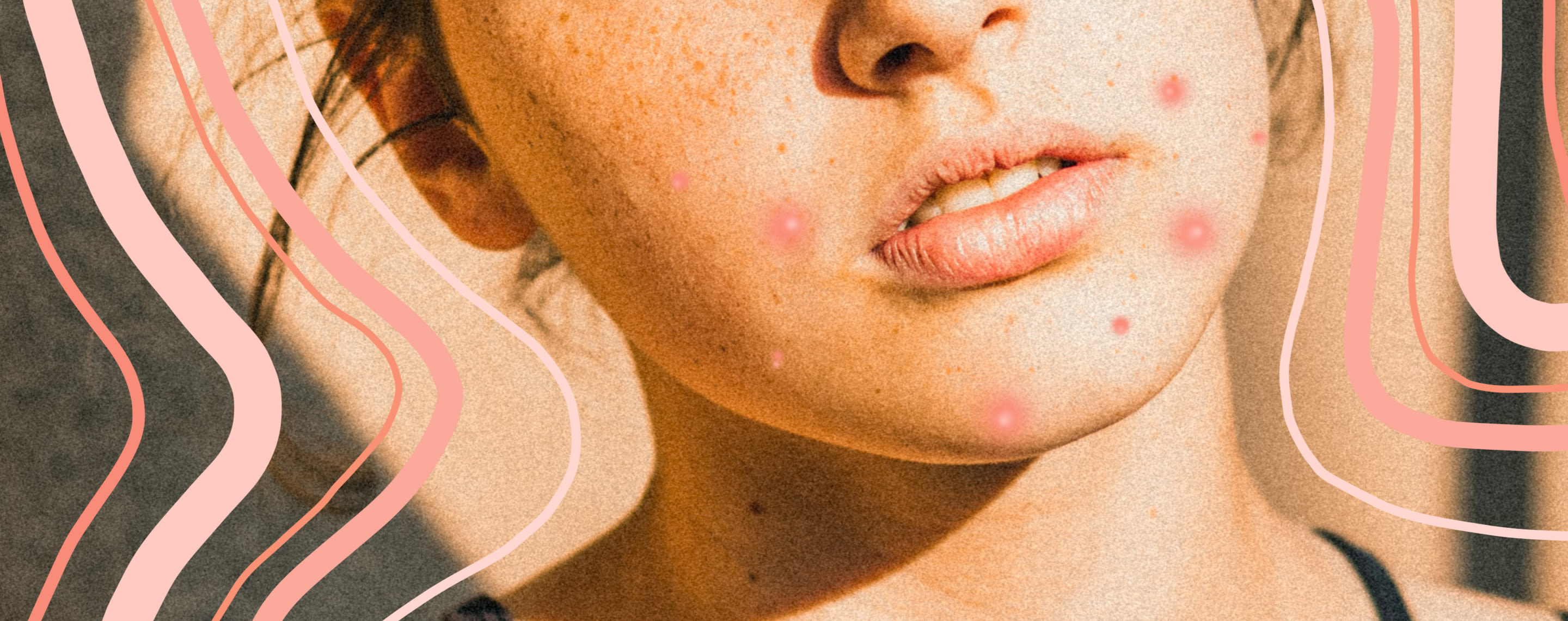Education
Your pimple that won’t go away: Here's how to make it


SHARE
Education
Your pimple that won’t go away: Here's how to make it
Medically reviewed by Kristin Hall, FNP
Written by Apostrophe Team
Last updated 11/1/2024
You’ve hid it, medicated it, and maybe even tried popping it. But it’s starting to feel like this zit might be here to stay. As if pimples and acne couldn’t get any worse, you’re stuck with the worst pimple in the world.
Dealing with acne is a pain, both literally and figuratively. They hurt, but they can also hurt your self image. And when you’re battling a single zit that won’t quit, it’s difficult to not just throw in the towel.
Determining how best to handle this persistent pimple begins with identifying it — what kind of acne lesion is it? What if it’s not an acne lesion at all?
Once you know what you’re dealing with, you’ll be better equipped to get rid of it once and for all.
Pimple Types
The first thing to do when you have an immortal pimple: make sure it is, in fact, a pimple. Acne treatments won’t work if the spot you’re applying them to isn’t acne in the first place.
There are several different types of pimples, each slightly different than the next. Do you see your spot in this lineup?
Open comedones (blackheads): Blackheads have a small, pin-sized black opening. It looks like someone crammed a tiny ball of dirt into your pore, though it’s actually blocked sebum (oil) interacting with the air around it — not dirt.
Close comedones (whiteheads): Small pimples with a white, pus-filled top are known as whiteheads. Not to be confused with a few larger pus-filled zit types (see pustules and cysts).
Papules: Papules are small pink bumps, and may be tender to the touch.
Nodules: These are large and hard pimples that feel like they originate deeper beneath the surface of the skin.
Pustules: Pustules are pus-filled, and typically have red around their base. They’re larger than whiteheads and are a type of inflammatory acne.
Cysts: Like nodules, cysts are big fellas. They’re filled with pus, can be painful, and can even result in scarring.
Acne Treatment
If you’ve confirmed your spot is, indeed, a pimple, there are several proven methods to rid yourself of it.
But if you’ve already been battling it for some time, it may be time to see a dermatology practitioner.
Squeezing and picking at it can only worsen the situation, so keep your hands off and talk to a pro.
In addition to manually removing the culprit, your dermatology practitioner may suggest:
Benzoyl peroxide: Found in over-the-counter gels and face washes, benzoyl peroxide is a drying agent that helps control bacteria that cause acne.
Topical retinoids: The go-to topical prescription medication for acne, retinoids are proven to reduce acne lesions and help control future breakouts.
Oral antibiotics: In the case of severe acne, your dermatology practitioner may prescribe an oral antibiotic to fight the bacteria from the inside out.
Other Possible Culprits
If your pimple just won’t go anywhere, there’s a decent chance it’s not a pimple at all, and treating a non-pimple with acne medications likely won’t do you any good.
Other potential causes of a resistant spot on your face may include any number of the following.
Ingrown hair
If your “pimple” has a pus-filled white head, it could be an ingrown hair. These occur when a hair curls and grows back into the skin, causing it to become inflamed.
They’re small, sometimes painful, and can be removed by a dermatology practitioner. On women, they’re most common on the bikini line.
Skin Cancer
A type of skin cancer known as basal cell carcinoma can resemble a pimple.
It may appear as a shiny, raised growth on your skin, and it’s not unusual to be mistaken as a pimple.
It may bleed or ooze and crust over like a pimple would.
Pityrosporum Folliculitis
Often mistaken for acne, pityrosporum folliculitis is a fungal condition where yeast multiples in your hair follicles, creating an itchy breakout of small, red bumps.
The bumps may or may not have white heads, and most frequently occur on the upper body, shoulders, and chest.
Acne scars
Sometimes an acne scar can resemble the pimple that was once there.
Known as hypertrophic or keloidal scars, they’re red, raised, and firm.
They’re more common among people with darker skin tones but can happen to anyone.
The Bottom Line on Pimples That Won’t Go Away
If what you thought was one temporary, annoying pimple has slowly turned into a problem that won’t go away, don’t panic.
Your first step is working with a dermatology practitioner to find out what kind of zit you’ve been stuck with.
Once you determine that, you can work with your dermatology practitioner to figure out a treatment that works for you.
And if it’s not a zit that’s causing all the trouble, there are explanations there, too.
The more you know about your skin, the better prepared you are to treat it. Good luck out there!
And remember: you’re gorgeous.
References
https://www.hopkinsmedicine.org/health/conditions-and-diseases/ingrown-hairs
https://www.aad.org/public/diseases/skin-cancer/types/common/bcc/symptoms
https://www.hopkinsmedicine.org/health/conditions-and-diseases/acne
Like what you just read? Sign up for our email list to get the scoop on skincare science delivered straight to your inbox.

Deep Dives
A dermatologist shares his thoughts on the recent studies about benzoyl peroxide and benzene.
Read More
Education
What is milia?
What is milia? Today, we’re jumping into one type of bump that you may have heard about most commonly in infants — milia.
Read More
Education
Best moisturizer for acne-prone skin
If you have combination acne-prone skin, figuring out which moisturizer is best for your skin might be tough. In this guide, we break down the best moisturizer for combination, acne-prone skin.
Read More
